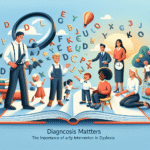
Introduction
In today’s fast-paced world, where the demands of work and personal life often collide, stress has become an unwelcome companion for many. If you’re feeling overwhelmed, anxious, or unable to regroup, you’re not alone. But here’s the good news: Mindfulness and Meditation: Your Pathway to Stress Relief can offer you a transformative way to reclaim your peace of mind. This article delves into the profound significance of mindfulness and meditation, showcasing how these practices can usher in a new era of calmness, clarity, and resilience.
Understanding Mindfulness and Meditation
What is Mindfulness?
Mindfulness is the practice of being present, fully engaging with the moment without judgment. It allows individuals to experience thoughts and feelings as they arise, fostering an acceptance that can help alleviate stress. Instead of worrying about the future or ruminating on the past, mindfulness encourages you to ground yourself in the "now."
What is Meditation?
Meditation, often intertwined with mindfulness, refers to a variety of techniques that promote focused attention and tranquility. While mindfulness can be practiced continuously throughout the day, meditation usually involves setting aside dedicated time to cultivate mental clarity through techniques like focused breathing, visualization, or body scans.
The Connection Between Stress and the Mind
Stress not only affects our emotional well-being but can also have physical consequences, contributing to high blood pressure, weakened immune function, and chronic illnesses. By understanding how mindfulness and meditation address the underlying mental patterns associated with stress, we can appreciate their value even more deeply.
The Benefits of Mindfulness and Meditation for Stress Relief
Reduced Anxiety Levels
Research indicates that engaging in mindfulness practices can significantly reduce anxiety. A study published in the Journal of Clinical Psychology found that individuals who practiced mindfulness meditation reported lower levels of anxiety and stress compared to those who did not.
Enhanced Focus and Clarity
Mindfulness and meditation help enhance cognitive flexibility and improve attention spans. This means that you’ll not only feel less stressed but also be more productive. A study by the American Psychological Association found that mindfulness training can improve executive functioning, which plays a crucial role in decision-making and problem-solving.
Greater Emotional Resilience
Mindfulness and meditation can enhance emotional resilience by teaching individuals how to better respond to stressors. This, in turn, leads to improved emotional regulation, helping people navigate life’s challenges with grace and composure.
Improved Relationships
Stress often spills over into our personal interactions. Mindfulness cultivates empathy and compassion, increasing your ability to connect with others positively. A study by the Journal of Happiness Studies highlighted that individuals who practiced mindfulness experienced enhanced relationship satisfaction.
Physical Health Benefits
Practicing mindfulness and meditation can lead to various physical health improvements, including lower blood pressure, enhanced immune function, and improved sleep quality. These physical benefits create a virtuous cycle, further reducing stress.
Real-World Applications: Case Studies
Case Study 1: Corporate Mindfulness Programs
Company: A major tech organization
Challenge: High employee turnover due to burnout
Solution: Implementing a mindfulness program that included daily guided meditation sessions during lunch breaks.
Results: Within six months, the company saw a 30% decrease in turnover rates. Employees reported feeling more focused, less anxious, and more connected to their team.
Case Study 2: Schools Utilizing Mindfulness
Institution: Urban High School
Challenge: Increased behavioral issues and student anxiety
Solution: Introducing a curriculum that incorporated mindfulness practices into daily routines.
Results: Teachers noted a 40% reduction in behavioral referrals, while students reported improved mood and academic performance.
Case Study 3: Healthcare Providers and Patient Care
Setting: A hospital’s inpatient care unit
Challenge: High levels of staff stress and burnout
Solution: Integrating mindfulness-based stress reduction (MBSR) training for all healthcare providers.
Results: Staff reported feeling more equipped to manage stress, resulting in improved patient interactions and care quality.
Techniques for Practicing Mindfulness and Meditation
Mindful Breathing
One of the simplest yet most effective techniques. Sit in a comfortable position, close your eyes, and focus on your breath. Inhale deeply through your nose, allowing your abdomen to rise, then exhale gently through your mouth, paying attention to the sensations.
Body Scan Meditation
Lie down comfortably and systematically bring attention to each part of your body, starting from your toes and moving up to your head. This technique helps to release tension stored in the body.
Guided Visualization
Imagine a serene environment, like a beach or forest. Use all your senses to engage with this visualization. What do you see, hear, feel? This technique can help reduce anxiety and promote relaxation.
Mindful Walking
Instead of rushing through your day, take time to walk mindfully. Focus on each step, feel the ground beneath your feet, and observe your surroundings. This practice can ground you and provide a sense of peace, especially during busy days.
Overcoming Common Obstacles in Mindfulness and Meditation
Lack of Time
Many believe they don’t have enough time for mindfulness or meditation. Start small. Even five minutes of focused breathing can be transformative.
Distractions
It’s normal to encounter distractions. Instead of fighting them, acknowledge them and gently return your focus to your breath or your chosen practice.
Inconsistent Practice
Forming new habits takes time. Set reminders or link your practice to existing routines — like the morning coffee ritual. Consistency is crucial.
Skepticism
If you’re skeptical about the benefits of mindfulness and meditation, start with research. Explore studies that discuss the transformative effects on mental health.
Fear of “Not Doing It Right”
Remember, there’s no perfect way to meditate or practice mindfulness. The key is to show up, be present, and engage with the experience, however it unfolds.
Actionable Insights for Your Journey
Start Daily Practice: Consistency is key. Aim for at least five minutes of meditation daily; gradually increase the time as it feels comfortable.
Engage in Mindfulness Throughout Your Day: Incorporate mindfulness into everyday moments—eating, walking, or even while washing dishes.
Join a Group: Consider joining a local or online mindfulness group for community support and shared learning.
Explore Resources: Utilize apps like Calm or Headspace to guide your meditation practice, especially if you’re just starting.
- Celebrate Small Wins: Recognize and celebrate progress; every moment spent practicing mindfulness or meditation is an achievement.
Conclusion
Incorporating mindfulness and meditation into your life opens up a pathway to profound relief from stress. By embracing the power of these practices, you forge a deeper connection with your inner self, enabling you to respond to life’s pressures with clarity and calmness. Mindfulness and Meditation: Your Pathway to Stress Relief is not just a slogan but a tangible reality waiting for you to explore. Take the first step on this transformative journey today and pave the way for a more peaceful, balanced life.
FAQs
1. How long should I meditate to see results?
Starting with just 5-10 minutes a day can lead to positive changes. Many people see increased benefits with longer practices over time.
2. Can mindfulness help with chronic pain?
Yes! Mindfulness can help you change your relationship with pain, reducing its impact on your daily life.
3. Is mindfulness only for adults?
No. Mindfulness can benefit individuals of all ages. Schools are now incorporating mindfulness into their curricula for children and adolescents.
4. What if I can’t stop my thoughts during meditation?
It’s normal to experience a flurry of thoughts. Acknowledge them without judgment and redirect your focus back to your breath.
5. Will mindfulness replace traditional therapy?
Mindfulness and meditation can complement traditional therapy but are not a replacement. They serve as powerful tools for improving mental health and wellness.
By adopting Mindfulness and Meditation: Your Pathway to Stress Relief into your lifestyle, you embark on a journey toward a more balanced, fulfilling way of living. Always remember: peace begins with you.

















